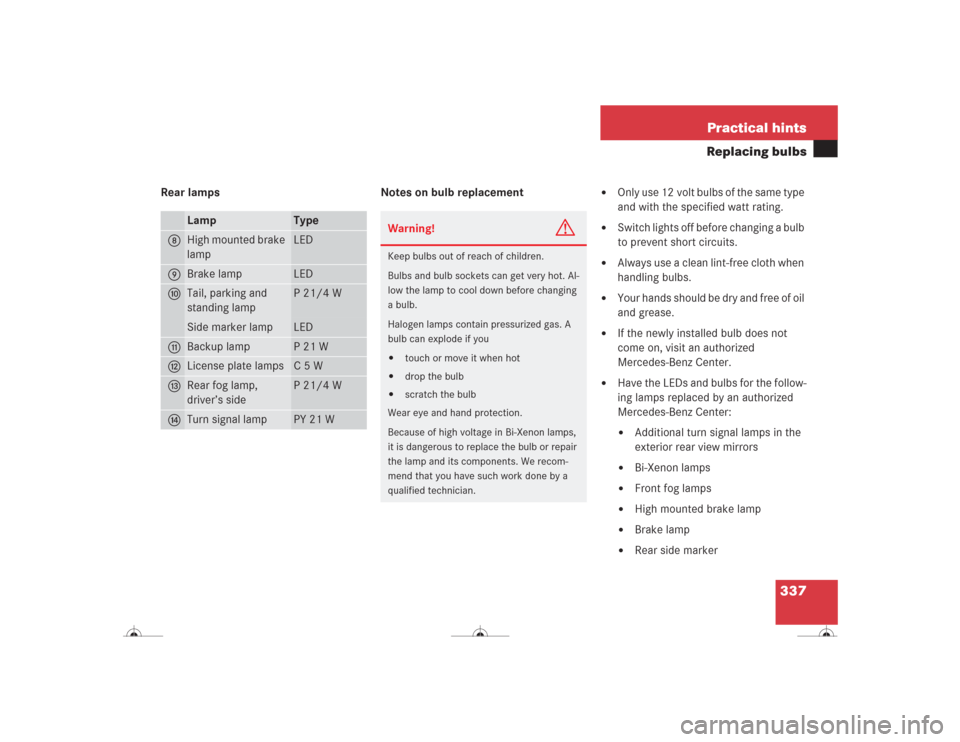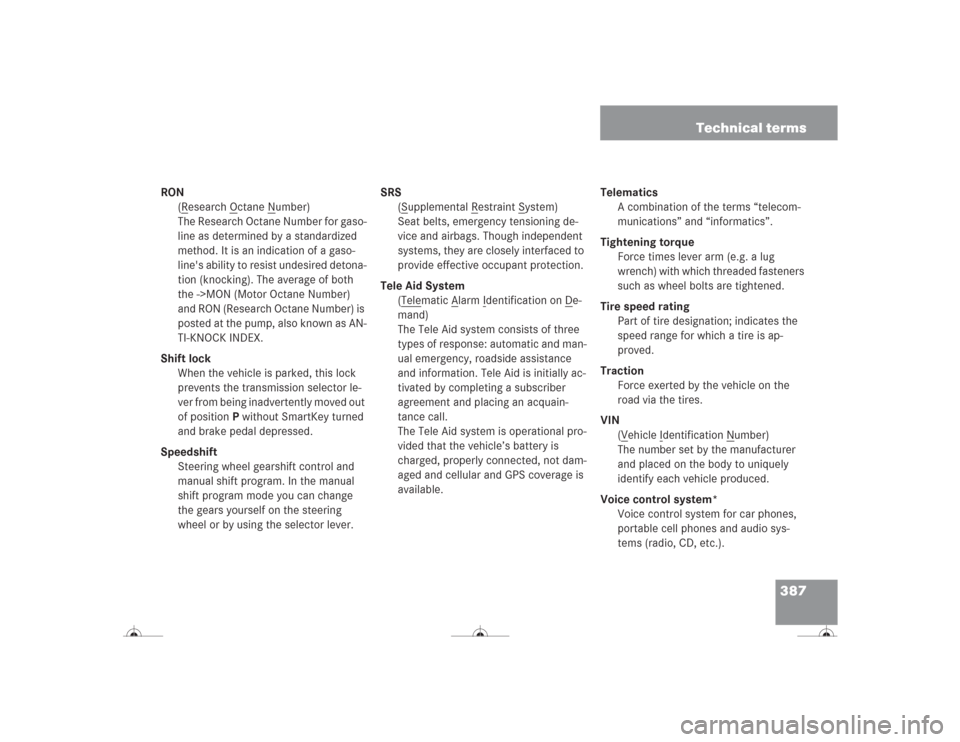Page 256 of 418

255 Operation
Driving instructions
Catalytic converter
Your Mercedes-Benz is equipped with
monolithic-type catalytic converters, an
important element in conjunction with the
oxygen sensors to achieve substantial con-
trol of the pollutants in the exhaust emis-
sions. Keep your vehicle in proper
operating condition by following our rec-
ommended maintenance instructions as
outlined in your Service Booklet.
Emission control
Certain systems of the engine serve to
keep the toxic components of the exhaust
gases within permissible limits required by
law.
These systems, of course, will function
properly only when maintained strictly ac-
cording to factory specifications. Any ad-
justments to the engine should therefore
be carried out only by qualified
Mercedes-Benz Center authorized techni-
cians.
Engine adjustments should not be altered
in any way. Moreover, the specified service
jobs must be carried out regularly accord-
ing to Mercedes-Benz servicing require-
ments. For details refer to the Service
Booklet.
!To prevent damage to the catalytic con-
verters, use only premium unleaded
gasoline in this vehicle.
Any noticeable irregularities in engine
operation should be dealt with prompt-
ly. Otherwise, excessive unburned fuel
may reach the catalytic converter,
causing it to overheat and start a fire.
Warning!
G
As with any vehicle, do not idle, park or op-
erate this vehicle in areas where combusti-
ble materials such as grass, hay or leaves
can come into contact with the hot exhaust
system, as these materials could be ignited
and cause a vehicle fire.
Page 338 of 418

337 Practical hints
Replacing bulbs
Rear lamps Notes on bulb replacement
�
Only use 12 volt bulbs of the same type
and with the specified watt rating.
�
Switch lights off before changing a bulb
to prevent short circuits.
�
Always use a clean lint-free cloth when
handling bulbs.
�
Your hands should be dry and free of oil
and grease.
�
If the newly installed bulb does not
come on, visit an authorized
Mercedes-Benz Center.
�
Have the LEDs and bulbs for the follow-
ing lamps replaced by an authorized
Mercedes-Benz Center:�
Additional turn signal lamps in the
exterior rear view mirrors
�
Bi-Xenon lamps
�
Front fog lamps
�
High mounted brake lamp
�
Brake lamp
�
Rear side marker
Lamp
Type
8
High mounted brake
lamp
LED
9
Brake lamp
LED
a
Tail, parking and
standing lamp
P 21/4 W
Side marker lamp
LED
b
Backup lamp
P21W
c
License plate lamps
C5W
d
Rear fog lamp,
driver’s side
P 21/4 W
e
Turn signal lamp
PY 21 W
Warning!
G
Keep bulbs out of reach of children.
Bulbs and bulb sockets can get very hot. Al-
low the lamp to cool down before changing
a bulb.
Halogen lamps contain pressurized gas. A
bulb can explode if you�
touch or move it when hot
�
drop the bulb
�
scratch the bulb
Wear eye and hand protection.
Because of high voltage in Bi-Xenon lamps,
it is dangerous to replace the bulb or repair
the lamp and its components. We recom-
mend that you have such work done by a
qualified technician.
Page 388 of 418

387 Technical terms
RON
(R
esearch O
ctane N
umber)
The Research Octane Number for gaso-
line as determined by a standardized
method. It is an indication of a gaso-
line's ability to resist undesired detona-
tion (knocking). The average of both
the ->MON (Motor Octane Number)
and RON (Research Octane Number) is
posted at the pump, also known as AN-
TI-KNOCK INDEX.
Shift lock
When the vehicle is parked, this lock
prevents the transmission selector le-
ver from being inadvertently moved out
of positionP without SmartKey turned
and brake pedal depressed.
Speedshift
Steering wheel gearshift control and
manual shift program. In the manual
shift program mode you can change
the gears yourself on the steering
wheel or by using the selector lever. SRS
(S
upplemental R
estraint S
ystem)
Seat belts, emergency tensioning de-
vice and airbags. Though independent
systems, they are closely interfaced to
provide effective occupant protection.
Tele Aid System
(T
elematic A
larm I
dentification on D
e-
mand)
The Tele Aid system consists of three
types of response: automatic and man-
ual emergency, roadside assistance
and information. Tele Aid is initially ac-
tivated by completing a subscriber
agreement and placing an acquain-
tance call.
The Tele Aid system is operational pro-
vided that the vehicle’s battery is
charged, properly connected, not dam-
aged and cellular and GPS coverage is
available.Telematics
A combination of the terms “telecom-
munications” and “informatics”.
Tightening torque
Force times lever arm (e.g. a lug
wrench) with which threaded fasteners
such as wheel bolts are tightened.
Tire speed rating
Part of tire designation; indicates the
speed range for which a tire is ap-
proved.
Traction
Force exerted by the vehicle on the
road via the tires.
VIN
(V
ehicle I
dentification N
umber)
The number set by the manufacturer
and placed on the body to uniquely
identify each vehicle produced.
Voice control system*
Voice control system for car phones,
portable cell phones and audio sys-
tems (radio, CD, etc.).